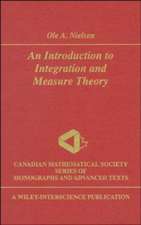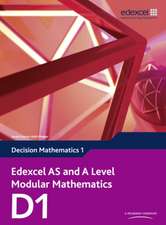Leonardo Pisano (Fibonacci): The Book of Squares
Editat de L. E. Sigleren Limba Engleză Hardback – 27 ian 1987
Preț: 317.33 lei
Preț vechi: 344.93 lei
-8% Nou
Puncte Express: 476
Preț estimativ în valută:
60.73€ • 63.17$ • 50.14£
60.73€ • 63.17$ • 50.14£
Carte tipărită la comandă
Livrare economică 07-21 aprilie
Preluare comenzi: 021 569.72.76
Specificații
ISBN-13: 9780126431308
ISBN-10: 0126431302
Pagini: 144
Ilustrații: 1
Dimensiuni: 152 x 229 x 15 mm
Greutate: 0.35 kg
Editura: ELSEVIER SCIENCE
ISBN-10: 0126431302
Pagini: 144
Ilustrații: 1
Dimensiuni: 152 x 229 x 15 mm
Greutate: 0.35 kg
Editura: ELSEVIER SCIENCE
Public țintă
Mathematicians, historians of science, and interested laypeople.Cuprins
Prologue. Introduction. Proposition 1: Find Two Square Numbers Which Sum to a Square Number. Proposition 2: Any Square Number Exceeds the Square Immediately Before It by the Sum of the Roots. Proposition 3: There is Another Way of Finding Two Squares Which Make a Square Number with Their Sum. Proposition 4: A Sequence of Squares is Produced from the Ordered Sums of Odd Numbers Which Run from 1 to Infinity. Proposition 5: Find Two Numbers So That the Sum of Their Squares Makes a Square Formed by the Sum of the Squares of Two Other Given Numbers. Proposition 6: A Number is Obtained Which is Equal to the Sum of Two Squares in Two, Three, or Four Ways. Proposition 7: Find in Another Way a Square Number Which is Equal to the Sum of Two Square Numbers. Proposition 8: Two Squares Can Again be Found Whose Sum Will be the Square of the Sum of the Squares of Any Two Given Numbers. Proposition 9: Find Two Numbers Which Have the Sum of Their Squares Equal to a Nonsquare Number Which is Itself the Sum of the Squares of Two Given Numbers. Proposition 10: Find the Sum of the Squares of Consecutive Numbers from the Unity to the Last. Proposition 11: Find the Sum of the Squares of Consecutive Odd Numbers from the Unity to the Last. Proposition 12: If Two Numbers are Relatively Prime and Have the Same Parity, Then the Product of the Numbers and Their Sum and Difference is a Multiple of Twenty-Four. Proposition 13: The Mean of Symmetrically Disposed Numbers is the Center. Proposition 14: Find a Number Which Added to a Square Number and Subtracted from a Square Number Yields Always a Square Number. Proposition 15: Square Multiples of Congruous Numbers are Congruous Numbers. Proposition 16: Find a Congruous Number Which is a Square Multiple of Five. Proposition 17: Find a Square Number Which Increased or Diminished by Five Yields a Square Number. Proposition 18: If Any Two Numbers Have an Even Sum, Then the Ratio of Their Sum to Their Difference is Not Equal to the Ratio of the Larger to the Smaller. Proposition 19: Find a Square Number for Which the Sum and the Difference of It and Its Root is a Square Number. Proposition 20: A Square Number is Found Which When Twice Its Root is Added or Subtracted Always Makes a Square Number. Proposition 21: For Any Three Consecutive Odd Squares, the Greatest Square Exceeds the Middle Square by Eight More Than the Middle Square Exceeds the Least Square. Proposition 22: Find in a Given Ratio the Two Differences Among Three Squares. Proposition 23: Find Three Square Numbers So That the Sum of the First and the Second As Well As All Three Numbers are Square Numbers. Proposition 24: The Question Proposed by Master Theodore. References Index.












